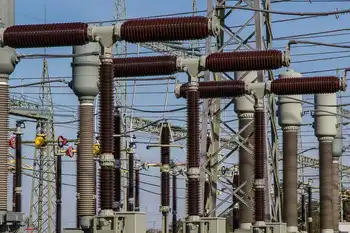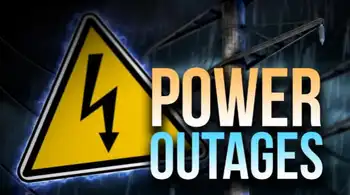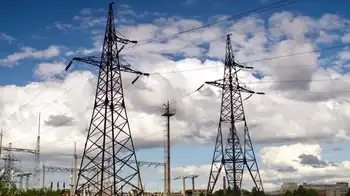SCE creating a “Circuit of the Future”
By Business Wire
CSA Z463 Electrical Maintenance -
Our customized live online or in‑person group training can be delivered to your staff at your location.

- Live Online
- 6 hours Instructor-led
- Group Training Available
Southern California Edison (SCE) will utilize AMSC’s dSVC solution in its “Circuit of the Future,” a nationally-recognized project that employs leading-edge technology to deliver power to 1,420 residential and business customers located in southern California’s Inland Empire. AMSC will deliver the solution to SCE by the summer of 2009.
A member of AMSCÂ’s Flexible AC Transmission Systems (FACTS) family, the dSVC solution not only produces dynamic reactive power compensation to maintain constant voltage, but also provides protection against voltage sags and flicker. The Smart Grid product enables utilities to affordably bring proven SVC transmission-level quality of service to distribution-level circuits for the first time, making it a key tool for modernizing power grids worldwide. With the ability to dynamically adjust its output in real time, the dSVC solution acts much faster than conventional capacitor banks and voltage regulators, mitigating the power quality issues that inconvenience area homes and can cost commercial and industrial customers millions of dollars in lost productivity.
SCE provides power to a total of 13 million people located in its 50,000 square-mile service territory. The utility is leading initiatives in the three “Smart Grid” technology areas of transmission, distribution and customer metering. AMSC will provide SCE with customized SVC controls to be deployed in its “Circuit of the Future” to provide improved voltage regulation for all of its retail electric customers while simultaneously delivering significant protection against major voltage sags.
“A spin-off from our larger-scale transmission SVC, our dSVC solution allows electric utilities to optimize power delivery directly at the grid’s critical load-serving points by automatically adjusting the reactive power supply in real time to meet their customers’ ever-changing electricity demands,” said Timothy Poor, AMSC’s Vice President of Global Sales and Business Development. “Made possible solely with AMSC’s unique thyristor valve design and proprietary controls technology, the product’s novel pad-mounted construction is a breakthrough in compact SVC design that allows this FACTS technology to be applied outside of substations in areas previously considered impractical, such as underground distribution circuits. We are pleased to have SCE as a first adopter of this unique technology.”
AMSC added its family of Static VAR Compensator (SVC) solutions to its product suite through the acquisition of Pennsylvania-based Power Quality Systems, Inc. (PQS) in 2007. Combining PQSÂ’s proprietary thyristor switch technology with AMSCÂ’s advanced controls technology created the highly scalable SVC Smart Grid solution that is being utilized by electric utilities at both distribution and transmission voltages as well as industrial customers. In addition to the companyÂ’s dSVC solution, AMSC offers turnkey transmission SVC solutions able to handle several hundred megaVAR of reactive compensation for wide area transmission voltage stability; as well as smaller SVC offerings for industrial facilities that routinely operate large motors, metal shredders, crushers, pumps and pipelines.











